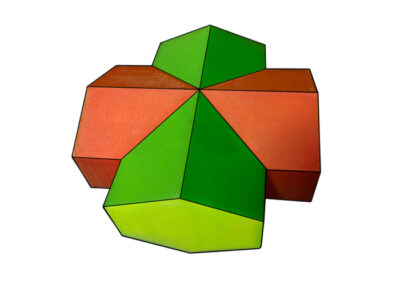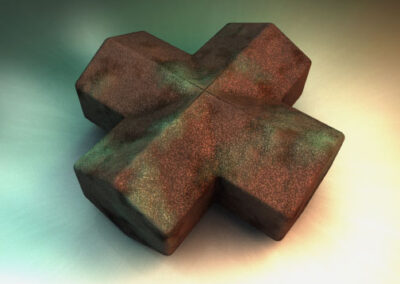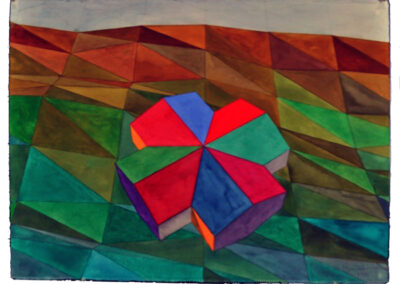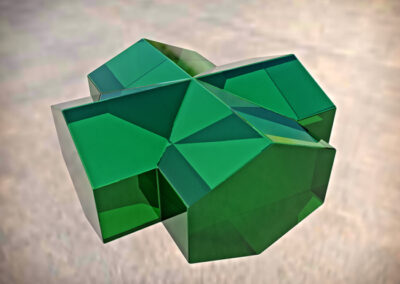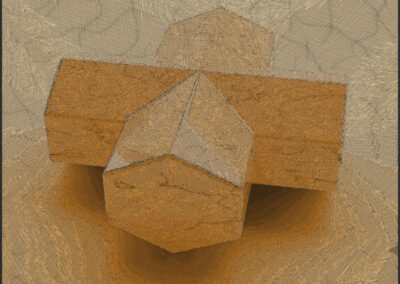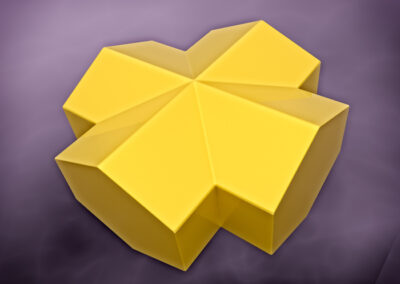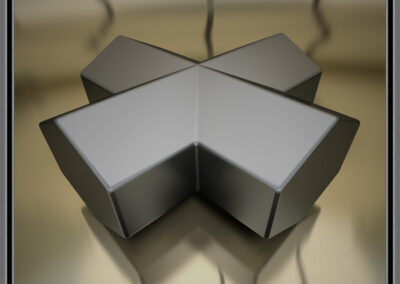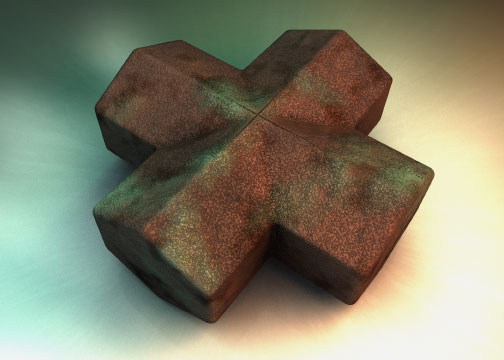
Staurolite, 2015. Pixeldust on metal.
I love staurolite crystals. They are rare, surprising geometric objects found in the dirt and rock of exposed strata in a few obscure places around the world, like Taos, New Mexico. They are beautiful and powerful.
Through the decades, I have used unusual, iconic geometric shapes to make my art: slabs, dodecagons, bent beams – and staurolites.
Staurolite is a metamorphic rock, which means it used to be a different kind of rock but was changed into a new form by great pressure and heat in a rare and narrow section of geological space and time. It grows into crystals containing twinned rods that sometimes form 90-degree angles resembling crosses, but are found more often twinned at 60-degree angles, like an X (Saint Andrew’s crosses). The crystals are fairly rare, especially those that formed with perpendicularly-crossed rods.
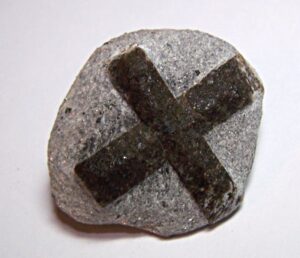
European staurolite (Wikimedia)
They’re called “fairy crosses” in some locations and are considered magical talismans. In northern New Mexico they are sometimes associated with Christian religious symbolism, prized by the local Spanish Catholic population for their cruciform shape and because of the typical formation of small red garnets among them, symbolizing drops of the blood of Christ.
When I first moved to Taos over 30 years ago, I stopped at the famous old trading post, El Rincon, in the center of town. There I discovered my first staurolite crystal – a large, nearly perfect specimen, which had been set in silver and strung onto a length of rawhide cord. Its shape attracted me, as well as the fact it looked very old — not just geologically, but as though it had been dug out of the ground many decades ago and had sat in that trading post jewelry case since the 1930s, waiting for me. The owner, Rowena Meyers, sold it to me and sent me on my way with my first Taos talisman, marking my move from frenetic Los Angeles to slower, more spiritually-oriented northern New Mexico.
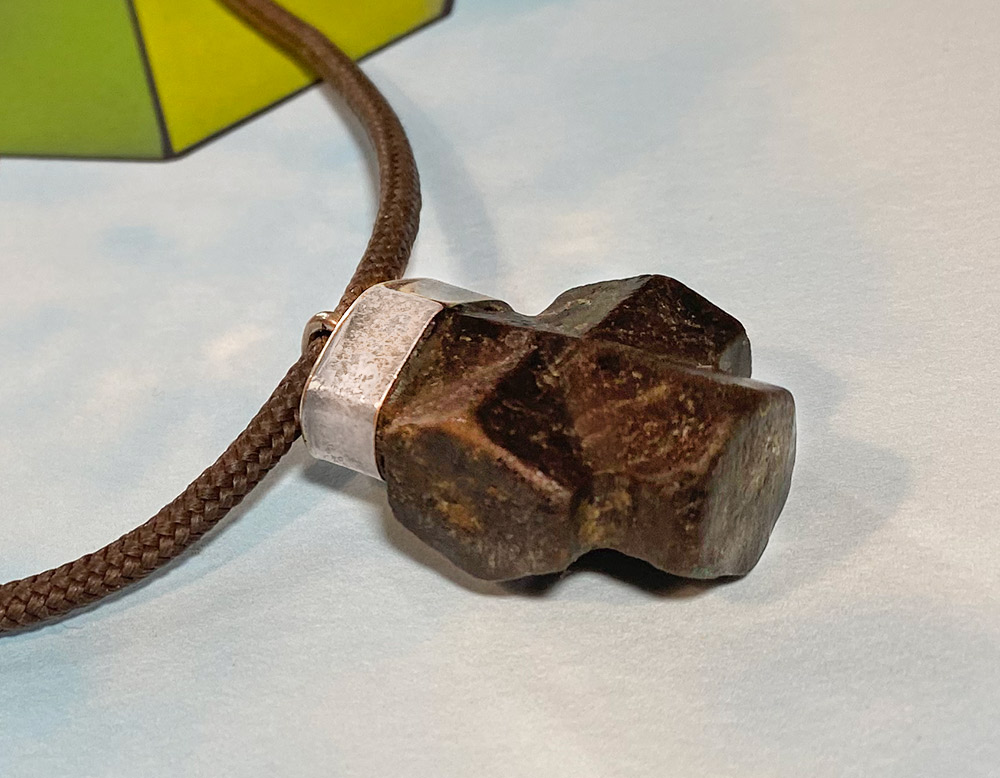
The staurolite crystal that lifted the plane
I didn’t know how powerful this talisman was until a few weeks later, during a rough Sunday night airplane flight from Albuquerque to LA. I am never an enthusiastic flyer, and was especially unhappy to board a rickety, over-used Southwest Airline jet packed with crowds of exhausted skiers and their gear, all anxious to get back to their LA lives. On our long, strained attempt at lift-off, the jet engines labored, growled and whined with leaden urgency – a terrifying sound that lasted far too long as we rumbled down the runway. I was convinced we would never get off the ground and would crash through the barrier and flip over into an arroyo.
Almost unconsciously, I took hold of the staurolite crystal, which was around my neck on its cord, and lifted it up slowly. As I lifted, the heavy, tired jet simultaneously lifted with it. My staurolite had the miraculous power to lift an airplane! It wasn’t the last time its powerful spiritual alchemy would lift me.
I learned some years later that geomagnetic polarities eons ago apparently had an effect on how staurolite crystals form. The directions in which the iron-rich crystalline rods of staurolite “grow” have been found to correspond to magnetic poles, which have shifted over eons.
Being bipolar, this fascinates me. The heavy, gray-brown crystal that attracted me so strongly turns out, you might say, to be bipolar, too. Without being too literal, I imagine myself a product of the natural dichotomy of the universe — pairs of opposites that affect the formation of things, phenomena, ideas, and art. Up, down; north, south; right, left; negative, positive. Most of my artwork reflects duality. I try to join the opposites of chaos and order in various proportions to solidify (crystallize?) them into an aesthetic object.
Ron Davis staurolite artwork, below. Visit kitschen-art.com to see available Staurolite prints on paper.

